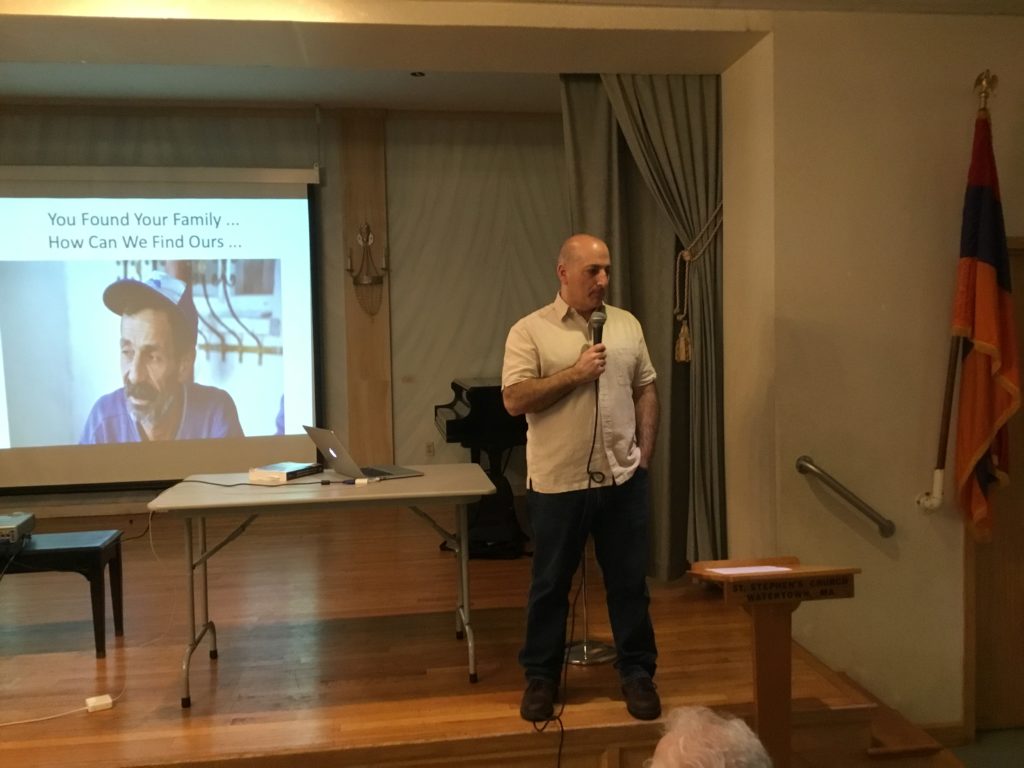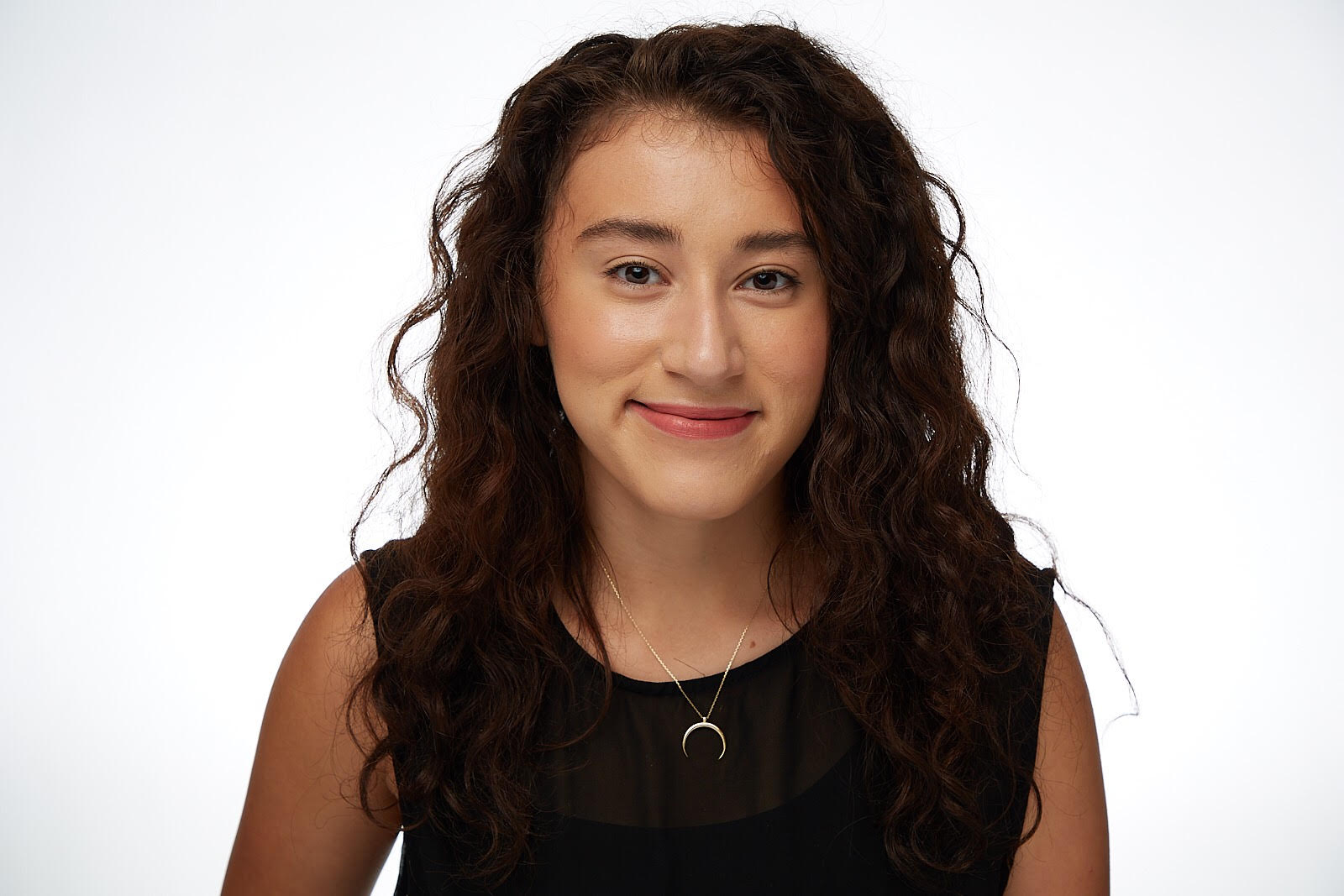
WATERTOWN, Mass.—With handwritten family trees and precious mementos in hand, dozens of local Armenians eagerly gathered in Watertown after Sunday service, prepared to learn how to trace their family history and roots.
“Through work, diligence and determination, you can find records from your family to try to expand what we know,” said George Aghjayan, director of Armenian Historical Archives and chair of the Armenian Revolutionary Federation Eastern Region, during his lecture presentation on researching Armenian roots at St. Stephen’s Church. “And we don’t know what the future can bring.”
The event, which was hosted by the St. Stephen’s Ladies Guild, took place during a traditional Lenten lunch. In it, Aghjayan urged the 70 audience members present to begin their search to find their genealogy. “This story is everybody’s story,” said Aghjayan, “We all have family members that we don’t know about.”
Aghjayan has been active in the Armenian genealogy movement for several decades. His work has helped increase the visibility of Armenians’ search for their lost roots and the residual effects of the Turkish government’s denial of genocide. Several years ago, with the help of colleagues, Aghjayan and others organized an Armenian Genealogy Conference, which met for the first time in 2016.
In 2018, an article Aghjayan penned for the Armenian Weekly about Turkey’s online government system, which revealed that many Turkish citizens had Armenian ancestry that they had not known about. The website crashed within hours, due to all the requests for information. (The article was later picked up by Robert Fisk from The Independent, calling out Erdogan’s motives in the release of this census system.) Aghjayan also continued to publish writings on his research in a seven-part series in the Weekly, helping advise others on how to find their roots, based on which country their family migrated to after the Genocide.
Over the course of his hour-long presentation, Aghjayan broke down the common misconception that all records related to Armenian heritage have been completely erased. Thanks to social media, the Armenian Immigration Project, DNA testing and the volunteer work of translators, he said, “there is an explosion of what can be done!” He advised everyone in search of their family roots to start by joining the Armenian Genealogy Facebook group, which is now helping over 10,000 members answer questions about their family history. Members are welcome to post questions about family surnames and inquire about family photographs, which has become an easy and accessible first step for those in search of common questions on genealogy.
We have treated them as part of the dead. But their descendants…are thirsting to find their relatives.
Referencing his own story of finding early marriage and baptism records at St. Sahag in Rhode Island, Aghjayan highlighted that the search for family roots can also begin with records found in the United States, which are invaluable but often go overlooked. Church documents in particular can reveal a great deal about family origins and the Armenian villages those families came from.
“We talk about the records that have been lost because of the genocide, but we haven’t done much to save our records here,” pointed out Aghjayan. Church records such as baptisms, funerals, engagements, marriage licenses and membership lists can help track relocation and other movement within families. Many of these documents were lost when Armenian churches cleaned out old files or when church basements flooded and records were lost by those who didn’t recognize the value of these historical documents. Fortunately, explained Aghjayan, the Mormon Genealogical Society in Utah salvaged and microfilmed many remaining documents.
Aghjayan says he initially sought out his journey to provide answers for his own children and to help others in repairing family history against all odds. This, he believes, is one way of reclaiming identity and agency in the face of the crimes that misplaced and separated Armenian families in the first place. Through DNA testing and extensive research, it is possible to find relatives that were thought to have perished during the genocide.
“It is important to test all relatives so you can find out how closely related you are. [This] allows them to look at charts and take the average between generations and find where it fits between known relationships. It tells you very basic things, the common ancestors through certain parts of the family.” One generation of a family can yield different DNA results, said Aghjayan, resulting in different common ancestors. Time is essential to this process as well, as DNA dissipates within twenty years.
Many came prepared with their own family trees, ready to piece together their Armenian roots, like Salpi Der Stepanian. With printed black and white photographs and a handwritten family tree, Der Stepanian was excited to take the first steps in discovering more about her family roots thanks to Aghjayan’s presentation. “We have started to collect everything” she said as she explained her interest in learning more about her family and the region of Van where they originated from.
After a brief question and answers session, participants enjoyed Armenian pastries and coffee while sharing family anecdotes and comparing family surnames, inspired to re-construct their own family trees, inspired by Aghjayan and his dedication to help Armenian families answer questions they thought would always remain unanswered.
Aghjayan’s research has not been without its challenges. During the lecture, he explained how the Turkish government, which views this information as sensitive, has blocked access to Ottoman records and research on Turkish citizens in historical reports. Despite these roadblocks, Aghjayan remains hopeful in light of new databases available, such as the ongoing Hairenik newspaper digitization project.
Aghjayan concluded the presentation with a personal anecdote. According to his family’s lore, Aghjayan’s maternal grandmother’s sister had perished in the Syrian desert, a common narrative many Armenian families inherited after the death marches during the genocide. However, after receiving DNA results and combing through interviews with relatives, he connected the missing links in his family story and discovered his grandmother’s sister survived the death marches, a story that awed the audience. In the end, Aghjayan was able to venture to Turkey to reconnect with these long, lost relatives from his maternal side, in a way, bringing them “back from the dead.” This story is a testament to the efforts that can be done in reconstructing family histories, which is “important given the difficulty and trauma of our people during the ruptured clause by the genocide.”
“We have treated them as part of the dead,” Aghjayan said of the ancestors he and others have been able to relocate thanks to genealogical research. “But their descendants are alive. And they are thirsting to find their relatives.”



Thanks for this interesting information.
Could you please ask Mr. George Aghjayan to contact me as we both are trying to reconstruct the genetic legacy of Armenians – a geographically dispersed people who abandoned most of his home country.
I am leading the Ethnogenomics Lab at the Institute of Molecular Biology, National Academy of Sciences of Armenia. Since 2015 we have embarked on the mission to draw a genetic atlas of historical Armenia to reproduce the rich spatial mosaic of the Armenian gene pool. As a whole, it will serve as a scientifically documented evidence of Armenians’ presence throughout the Armenian Highland for several millennia.
To draw this atlas we need to collect 10 DNA samples from donors representing each of the 20-25 different regions of historical Armenia. The main criterion for the selection of donors for this project is the compulsory origin of all their ancestors, i.e. both via paternal and maternal lines, from the same region of historical Armenia. It is clear that with each subsequent generation the number of Armenians that meet this requirement significantly reduces. Therefore, the collection of this material should be carried out as soon as possible.
If your all ancestors originate from the same area of historical Western Armenia, we kindly ask you, while traveling to Armenia, to provide your DNA sample.
For more details please contact us at the address below:
Levon Yepiskoposyan, DSc, Prof.
Head, Laboratory of Ethnogenomics
Institute of Molecular Biology
National Academy of Sciences, Republic of Armenia
7 Hasratyan Street, 0014, Yerevan, Armenia
e-mail: lepiskop@gmail.com